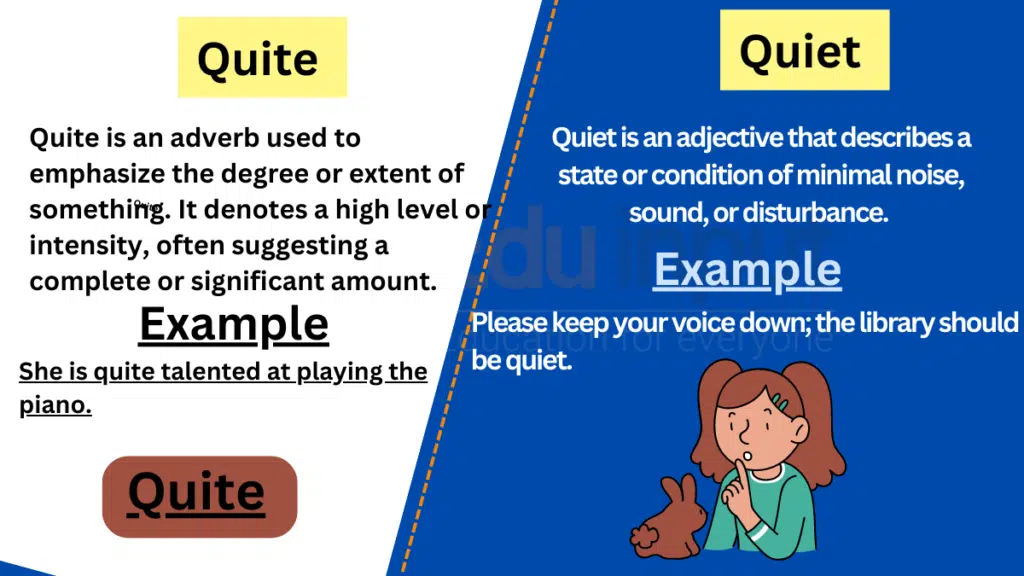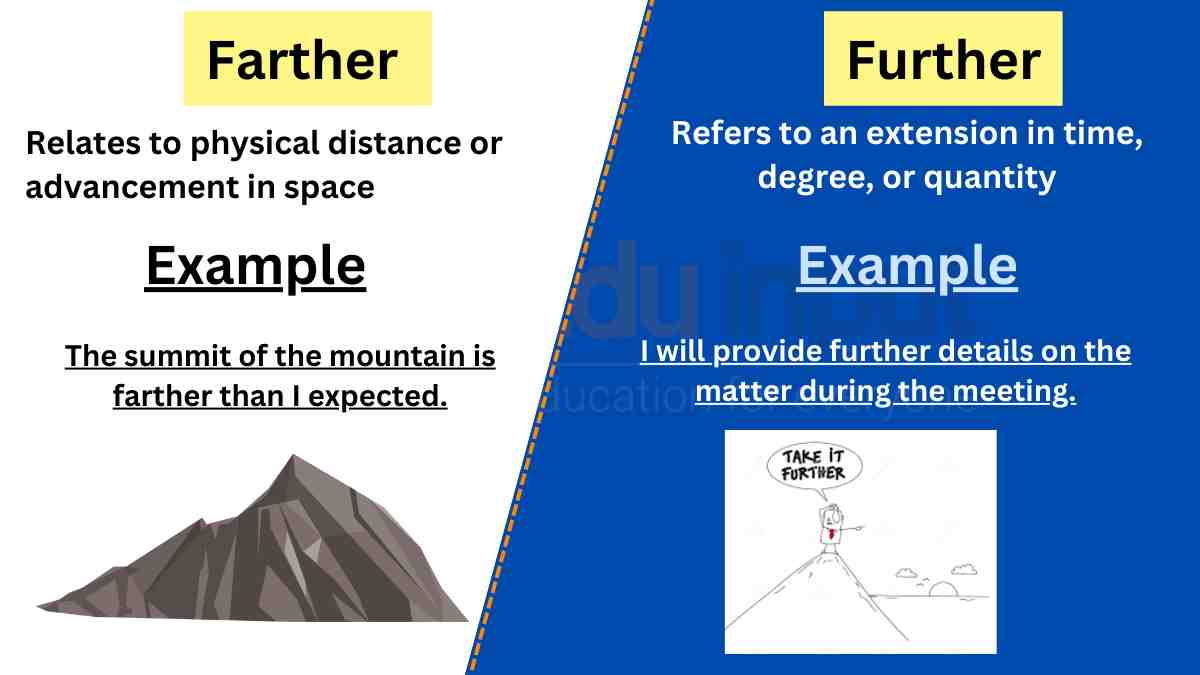Quite vs. Quiet-Difference and Examples
In the English language, words with similar spellings or pronunciations can often lead to confusion. Two such words that are frequently misunderstood are “quite” and “quiet.” Although they may appear similar, they possess distinct meanings and usage. This article aims to clarify the differences between “quite” and “quiet” by providing clear explanations and examples. Let’s explore their individual definitions and contexts to better understand their correct usage.

Meanings and Examples
Quite meaning
Quite is an adverb used to emphasize the degree or extent of something. It denotes a high level or intensity, often suggesting a complete or significant amount.
Quite Examples
a) She is quite talented at playing the piano.
b) The movie was quite enjoyable; we all had a great time.
c) I am quite certain that we will meet the deadline.
Quiet meaning
Quiet is an adjective that describes a state or condition of minimal noise, sound, or disturbance. It refers to a calm, peaceful, or tranquil atmosphere.
Quiet Examples
a) Please keep your voice down; the library should be quiet.
b) The baby finally fell asleep, and the room became quiet.
c) The serene park provides a quiet escape from the bustling city.
Difference between Quite and Quiet
| Quite | Quiet | |
| Meaning | Adverb: emphasizes the degree or extent | Adjective: describes a state of minimal noise or disturbance |
| Example | “She is quite talented in playing the piano.” | “Please keep your voice down; the library should be quiet.” |
| Usage | Emphasizing degree, intensity, or certainty | Describing a calm, peaceful, or tranquil state |
| Context | Skills, experiences, emotions | Environment, atmosphere, behavior |
Usage in a Paragraph
The adverb “quite” is used to emphasize the degree or extent of something. It suggests a high level of intensity, often indicating a complete or significant amount. For example, when complimenting someone’s skills, you might say, “She is quite talented in playing the piano,” to express a considerable level of admiration for their musical abilities. Similarly, when describing a movie, you could use “quite” to convey that it was highly enjoyable and left a lasting impression on you and your friends.
On the other hand, the adjective “quiet” is employed to describe a state or condition of minimal noise, sound, or disturbance. It refers to a calm, peaceful, or tranquil atmosphere. In settings like libraries, you would request people to keep their voices down by saying, “Please be quiet,” indicating the need for a noise-free environment. Moreover, when a baby falls asleep and the room becomes calm and peaceful, you would describe it as “quiet,” reflecting the absence of noise or commotion.
Understanding the distinction between “quite” and “quiet” is essential for precise and effective communication. “Quite” functions as an adverb, emphasizing the degree, intensity, or certainty of something. On the other hand, “quiet” serves as an adjective, describing a state of minimal noise or disturbance and implying a calm or tranquil atmosphere. By using these words accurately in appropriate contexts, individuals can avoid confusion and ensure their messages are conveyed with clarity.







Leave a Reply